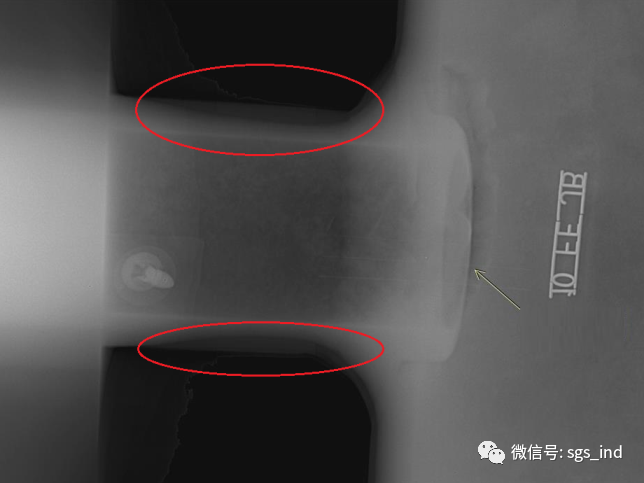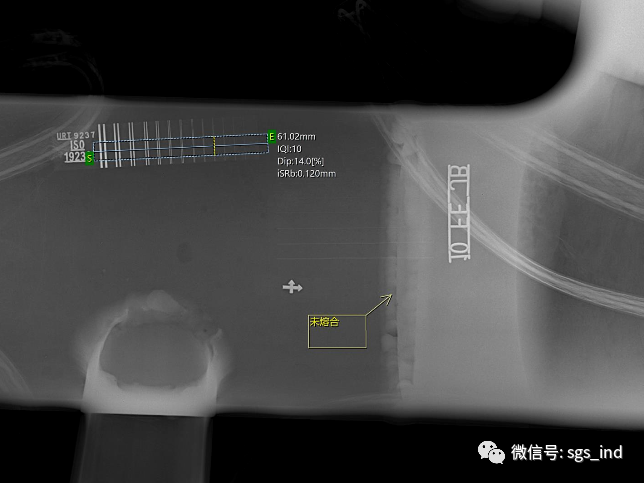In the petrochemical industry, some pipelines operate at high or ultra-low temperatures for a long time, and are susceptible to chemical and electrochemical reactions from internal materials and external media. Pipelines are prone to corrosion and wall thickness reduction, resulting in safety hazards, and even serious leakage or explosion accidents. In order to ensure the safe operation of pipelines during the inspection cycle, it is urgent to achieve online detection of pipeline defects and hidden dangers. However, for pipelines with insulation layers, traditional detection methods are difficult to implement. The main difficulty lies in the need to remove a large amount of insulation layer during testing. The high temperature on the surface of the pipeline after removing the insulation layer may affect the testing results, and secondary corrosion may also occur after restoring the insulation layer after testing. Therefore, choosing a reliable pipeline insulation layer detection technology is of great significance. At present, commonly used pipeline insulation layer detection techniques include pulse eddy current testing, magnetic flux leakage testing, and film radiographic testing, but each has its own limitations. When pulse eddy current technology is used to detect pipelines with insulation layers, the ferromagnetic substances in the surrounding pipelines and insulation layers may interfere with the extraction of feature signals. The uneven thickness of the insulation layer can also interfere with the detection results, and the detection sensitivity for local corrosion is low. Film radiographic testing technology has disadvantages such as low detection efficiency, low tolerance, difficulty in long-term storage of films, and unfavorable digital filing. Magnetic flux leakage detection technology can only detect large corrosion pits, and the images are not intuitive. X-ray digital imaging (DR) technology can achieve pipeline corrosion and defect detection without removing the insulation layer. When using this technology for detection, the rays penetrating the inspected pipeline are received by a digital detector array (DDA) and directly converted into digital image display, without the need for darkroom processing. It has high tolerance and detection efficiency, and can automatically measure pipeline wall thickness, corrosion pits, pipe diameter, etc. Digital radiographic images can be viewed on screens such as computers, tablets, and mobile phones, making them easy to store, call, transmit, and share. This greatly facilitates pipeline integrity assessment and monitoring in industries such as petroleum, chemical, power, machinery, metallurgy, pharmaceuticals, and food processing.
1.DR Fundamentals
DR technology utilizes X-rays or γ Due to the attenuation characteristics, the intensity of rays transmitted from different thickness areas will weaken to varying degrees relative to the incident intensity when the rays penetrate the inspected pipeline; The radiation passing through the workpiece is received by a flat digital detector and converted into a digital signal, which is sent to a computer for processing to form a digital image. DR technology is one of the fast and efficient X-ray imaging technologies, which can obtain digital images within seconds. Portable DR detection systems are generally composed of X-ray machines, digital detector arrays, computers, software, cables, power cables, network cables, etc.
2.Inspection schematic diagram
3.Application Legend
Automatic measurement of wall thickness pitting corrosion


Outer wall corrosion - thinning Weld defects - lack of fusion
4.summarize
1) DR technology can be applied to the detection of insulation layer in in-service high-temperature (ultra-low temperature) pipelines. It can efficiently detect and identify pipeline corrosion and accumulation, wall thickness measurement, and weld defects, facilitating the evaluation of safe operation of in-service or extended service pipelines and timely detection of hidden dangers.
2) DR technology solves the problems of production stoppage or dismantling of pipeline insulation layers caused by conventional inspection techniques for insulated pipelines, as well as the economic losses caused thereby. It also indirectly provides a basis for the evaluation of insulation layers.
3) The application of DR technology is in line with the current national policy of energy conservation and environmental protection. The detection sensitivity is high, fast, and efficient, reducing radiation dose, radiation hazards to employees and the public, and reducing radiation protection pressure. Without the use of film, the darkroom processing process eliminates the impact of chemical agents on the environment and personnel health.
4) Due to the limitations of the insulation layer and the inability of the digital flat panel detector to bend, the defect images on the detector side and the radiation source side have varying degrees of magnification. The determination of defects needs to be corrected based on the characteristics of the digital image and the comparison block.
5) In fact, DR technology can be applied not only to pipeline corrosion and weld defect detection, but also to casting detection of metal and its alloys and non-metallic materials, plastic, rubber, ceramics, composite materials, electronic components, assembly accuracy and structural integrity detection of important devices, mineral screening, cultural relics and archaeological identification, etc.














